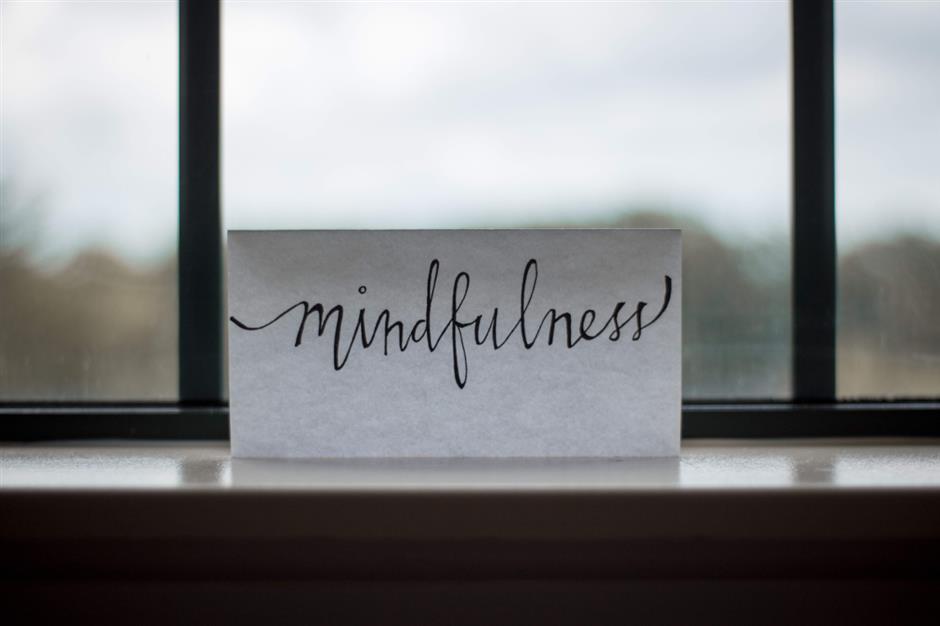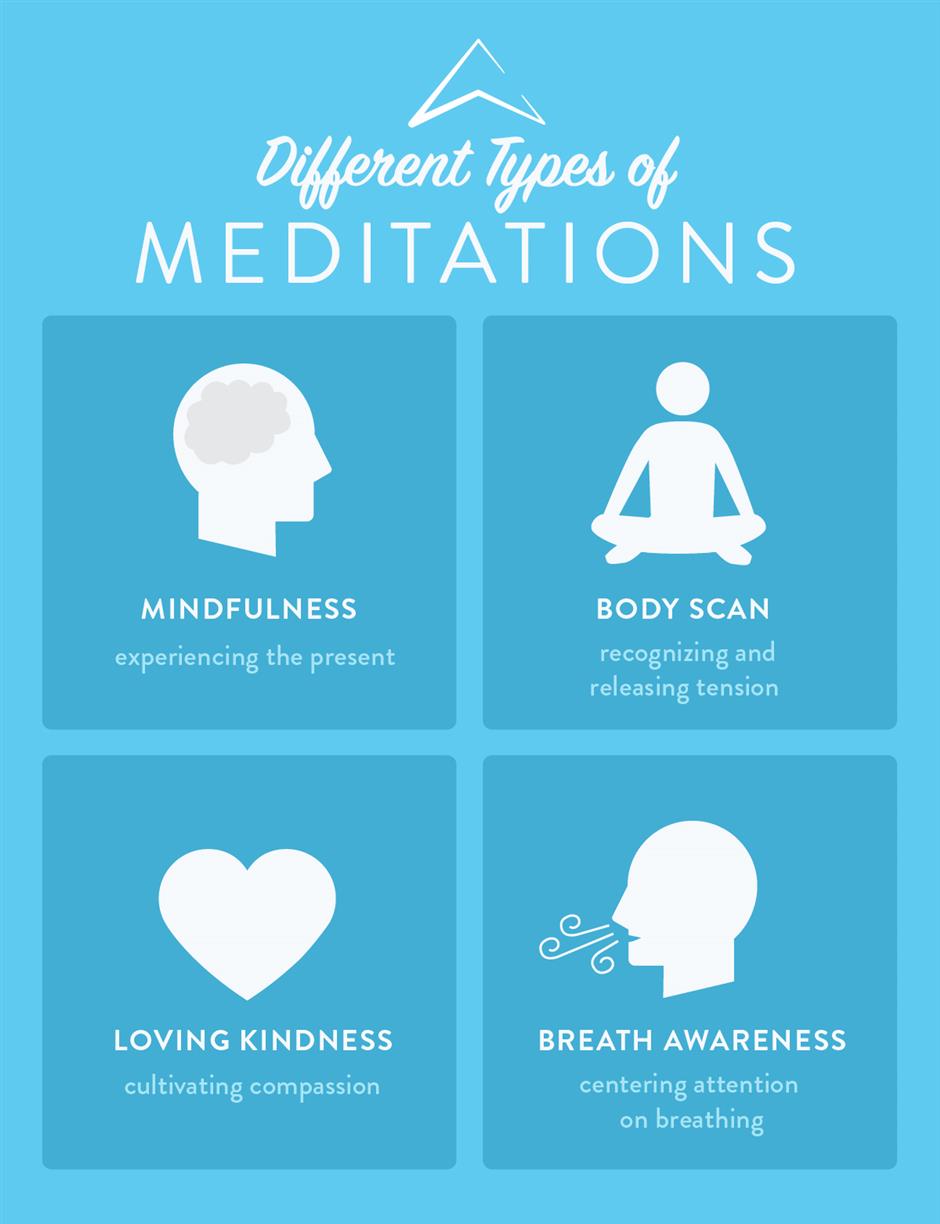
An important aspect of being a WAG Coach is helping others succeed on their health and fitness journey by teaching valuable nutrition practices. But what many people often overlook in the pairing of fitness and nutrition is the third member of the trifecta—mindfulness.
That’s why so many WAG coaches work with clients to accomplish weekly mindfulness goals and exercises along with their nutrition.
If you’re someone who has focused a lot of time and energy on nutrition and fitness but has reached certain plateaus or obstacles, it might be time to consider how you practice mindfulness.
What’s the Big Deal With Mindfulness?
If you’ve ever considered meditation or another form of mindfulness, you’ve probably come across statistics or heard from friends that it can help reduce your stress levels. You might have even seen studies that show these practices may help with weight loss.
But maybe even with these facts, you’re a bit wary about the practices and think that it all seems a bit “mushy” or “foo-foo.”
Advertisement
We get that! So our goal is to help explain in simple, practical terms some of the benefits of mindfulness and meditation and how they can be integrated seamlessly into your day.
What Is Mindfulness?
Mindfulness is a self-directed practice for relaxing the body and calming the mind through focusing on present-moment awareness.[1] The goal of mindfulness is staying in the present moment, with a non-judging, non-striving attitude of acceptance.[2,3]
How Can Mindfulness and Meditation Improve Your Life?
Now let’s talk about why mindfulness can be a life-changing tool.
First, we’ll go through the natural human response to life circumstances and events:
- Life circumstances trigger thoughts. For example, someone cuts you off in traffic during your morning commute. You think to yourself, “What a jerk! This day is already headed downhill.”
- Thoughts trigger emotions. Your thought about the day heading downhill causes you to feel discouraged, angry, and a little sad.
- Emotions trigger behaviors. Your feelings of anger and sadness cause you to seek comfort in the form of a donut in the meeting at work.
- Behaviors give us results (positive or negative). Your behavior—choosing the donut—causes you to feel like you’ve “ruined” your nutrition plan for the day, so you go on an all-out eating spree, committing to restarting your diet tomorrow.
With mindfulness, you can create a gap between the circumstances and the thoughts you have about them.
Advertisement
This helps you respond rather than react to your circumstances, which leads to more positive results.
How Does Meditation Fit Into This?
Mindfulness is cultivated through the practice of meditation.[4]
In other words, we practice mindfulness through meditation.
Meditation is, very simply, focused.
It’s training our ability to focus on a single point.
Advertisement
That’s it.
Not too intimidating after all, right?
The ability to focus on a single point is a valuable skill to have in a world where we’re facing constant distraction—where 50 different things are pulling at our attention, which can make us feel scattered, stressed and anxious.
How Does Mindfulness Help With Stress?
It’s part of life to experience stress. Not all stress is bad—stress is part of growth. During a workout, for example, we’re putting our body under a certain amount of stress so that it will, over time, get stronger and fitter. Without some stress, we’re standing still.
Too much stress, however, is bad for our health and wellbeing.
Advertisement
As we described above, practicing mindfulness (through meditation) can create a “pause moment” in between the circumstances of life and your reaction to those circumstances.
That pause moment can be the difference between a reaction and a thoughtful response (grabbing the donut versus letting go of what happened during your morning commute and choosing to eat your pre-planned breakfast).
And those pause moments add up throughout your life. The more often you respond thoughtfully to circumstances, the more your life will unfold in the way you’d like it to unfold.
Is There Any Research Showing This Stuff Actually Works?
Yes! There’s plenty of research supporting the benefits of mindfulness and meditation.
Recent research is showing that the way we intentionally shape our internal focus of attention (through mindfulness practice) induces a state of brain activation during the practice.
Advertisement
And with repetition, this brain state can actually become an enduring trait of the individual as reflected in long-term changes in brain function and structure.
This is a fundamental property of neuroplasticity—how the brain changes in response to experiences.
In simple terms—your brain can change through meditation!
Here are a few samples of what the research is showing us, in particular with regard to stress, binge eating, and weight loss:
- Participation in a mindfulness-based stress reduction (MBSR) course decreased anxiety and binge eating.[5]
- Office workers who practiced MBSR for 20 minutes a day reported an average 11% reduction in perceived stress.
- Fifth-grade girls who did a 10-week program of yoga and other mindfulness practices were more satisfied with their bodies and less preoccupied with weight.[6]
- In the overweight/obese population, mindfulness-based interventions appear to reduce obesity-related eating behaviors including binge eating and emotional eating.[7]
Not convinced that mindfulness can help you achieve your weight loss goals? Check out this study published online in the Journal of Obesity.[8]
Advertisement
In this study, participants practiced simple mindful eating and stress-reduction techniques, which helped prevent weight gain without dieting.
Here are more details about that study:
- It involved chronically stressed, overweight and obese women.
- Twenty-four of the 47 women were randomly assigned to mindfulness training and practice, and the other 23 served as a control group.
- Although no diets were prescribed, all participants attended one session about the basics of healthy eating and exercise.
- The women in the mindfulness group attended nine weekly sessions, each lasting 2.5 hours, where they learned stress reduction techniques and how to be more aware of their eating by recognizing bodily sensations (including hunger, fullness and taste satisfaction). At week six, they attended an intensive seven-hour silent meditation retreat.
- The women were asked to set aside 30 minutes daily for meditation exercises and to practice mindful eating during meals.
- Researchers tested their psychological stress before and after the four-month study, and they also recorded the women’s body fat and cortisol levels.
Results of the study:
- Among the women in the mindfulness treatment group, changes in body awareness, chronic stress, cortisol secretion, and abdominal fat were clearly linked. Those who had greater improvements in listening to their bodies’ cues, and greater reductions in stress or cortisol, experienced the greatest reductions in abdominal fat.
- Among the subset of obese women in the study, those who received the mindfulness training had significant reductions in cortisol after waking and also maintained their total body weight, compared to the women in the control group who had stable cortisol levels and continued to gain weight.
How Can Mindfulness and Meditation Help You Lose Weight (or Achieve Other Health Goals)?
In the study described above, the women in the treatment group achieved positive results through practicing techniques, including mindful eating.
But what does “mindful eating” actually mean? How do you do it?
Advertisement
Mindful eating involves:[9]
- Eating slowly and without distraction. Put away your phone and the TV. Try sitting at an actual table.
- Listening to physical hunger cues and eating only until you’re full. Try to stop eating when you’re 80% full. Can you recognize where that point is?
- Distinguishing between actual hunger and non-hunger triggers for eating. You see an ad for fast food on a TV commercial and find yourself thinking about that fast food joint all day long.
- Engaging your senses by noticing colors, smells, sounds, textures, and tastes.
- Learning to cope with guilt and anxiety about food. Do you tell yourself that certain foods are “bad”? This can lead to a feeling that you are “bad” if you eat these foods.
- Eating to maintain overall health. Pay attention to which foods provide you with sustained energy and a feeling of well-being versus the foods that give you a quick “high” and then crash.
- Appreciate your food. Think about where your food came from—maybe the tomatoes in your salad came from a local farmer who put lots of love and care into growing them.
Even if you aren’t trying to lose weight, mindful eating seems to help people enjoy their food more and struggle less over controlling their eating.[10]
What About Binge Eating?
Do you struggle with binge eating? Mindfulness practices can help. Practicing mindful eating has been shown to drastically reduce the severity and frequency of binge eating.[11]
In fact, one study found that after a six-week group intervention in obese women, binge-eating episodes decreased from four to 1.5 times per week. The severity of each episode also decreased.[12]
The mindful eating tips above are a perfect start in building a connection between your mind and body when it comes to eating. To begin, pick one meal per day to focus on those points mentioned above. Once you’re feeling comfortable with one “mindfully eaten meal”, try eating two or more meals that way.
Advertisement
It might feel weird and awkward at first, but with practice and consistency, mindful eating will become more natural.
Can Mindfulness Give Athletes a Competitive Edge?
Competitive athletes in any sport need to perform successfully under stress, in environments where they cannot control every variable. This means it’s crucial for them to be able to maintain a calm focus when distractions are high.
If you’re a competitive Olympic weightlifter or powerlifter, for example, and you approach the barbell with doubt in your mind—you’ve basically just decided you aren’t going to make your lift.
The key is to recognize when your mind is drifting and bring the focus back to your breath. Many athletes also find it helpful to create a strong, vivid visualization of a positive outcome (for example, nailing their snatch with perfect form).
To gain a competitive edge, we recommend beginning to practice mindfulness habits during your regular training in the gym. Creating habits and rituals builds confidence when you’re going for a PR or a challenging lift.
Advertisement
Many athletes find it helpful to use a set of physical cues that their body will learn to follow every time they perform. For example, if you’re preparing for a heavy back squat, you could focus on the following checklist. Then, in a high-pressure competition setting, you could focus on your checklist rather than how heavy the actual lift is:
- Grab the bar, pressing the heel of my hand into it.
- Breathe in.
- Set up under the bar.
- Breathe out, breathe in, brace.
- Tighten upper back, unrack the bar.
- Step right foot then left foot.
- Breathe out, breathe in—descend into a squat.
The key is that this pattern never changes—from your warm-up to your heaviest set of the day, you always follow this pattern. The idea is to place all focus on the elements of training that you can control and that you’ve mastered over time.
What Are Some Simple Ways to Begin Practicing Mindfulness?
Focusing on your breath is the simplest, easiest way to begin practicing mindfulness—it’s always available to you, and just a few deep belly breaths can have a powerful impact on your sense of well-being.
Most of us usually breathe in a shallow way, especially when we’re rushing from one task to another or feeling anxious. In a single day, we take somewhere between 17,000 to 30,000 breaths—how many of those breaths are we really aware of?
Breathing and mindfulness go hand in hand because the past and the future become irrelevant. Concentrating on just a single deep breath puts immediate focus on this moment. And just like that—you’re practicing mindfulness!
Advertisement
Ready to Take It to the Next Level? Let’s Talk Meditation.
Meditation can seem intimidating (and maybe even boring) for folks who haven’t tried it. Fortunately, there are so many apps available that make it easy for anyone to begin a meditation practice
Lucky for you, we’ve tested the top mindfulness and meditation apps to make your already busy schedule a lot less hectic.
Bonus: Most of these apps offer free trials, so you can try different meditation styles and test which one works best for you.
Before diving into the apps, here are a few different types of meditations you’ll come across, which might give you some direction as to where your personality or intention should lead you to practice.

Advertisement
Mindfulness
Mindfulness meditation is centered around experiencing things in the present. Guided mindfulness sessions will often bring the practitioner’s focus toward the breath or a mantra to create a clear mental space.
If you’re new to meditation or struggle with focus, racing thoughts, and distractions, this might be the right place to start.
Body Scan
During a body scan session, practitioners are guided to focus on doing a “scan” of their body, beginning at one end and moving to the other, to recognize and release tension.
If you carry stress in a physical way or notice that you clench your jaw or shrug your shoulders, this might be a great option for you.
Loving Kindness
As the name suggests, this practice is focused on bringing thoughts of love and kindness to the forefront of the mind to cultivate compassion for others and yourself. You’ll focus on giving love and receiving it. If you struggle with frustration, anger, blame, or relationship stress, this might be a useful practice for you.
Advertisement
Breath Awareness
Our emotions can influence our breath. Think about how your breath flows when you’re relaxed in bed versus having an argument with someone. When we spend much of our day busy, perhaps a bit stressed, we might not take a second to check in with how we’re breathing.
The practice of breath awareness centers the attention to the breath, which practitioners can implement outside the sessions. If you’re looking for an easy way to implement practice for everyday life, this might be for you.
Now that you’re a bit more aware of types of meditation let’s check out some apps:
Guided Meditation
Advertisement
- Customizable session lengths
- Has structured sessions that mimic being in a meditation class in the comfort of your own home (or anywhere!)
- Themed meditations for topics such as sports performance, stress, food cravings, etc.
- Mindfulness exercises for daily activities like commuting, cooking, and eating
- Free basic subscription
- Subscribe for $12.99 per month or $96 for the year
- Sessions range from three to 25 minutes, so you can find one to fit your schedule
- Meditation topics include gratitude and self-esteem so you can tailor your practice
- Guided sleep sessions
- More than 25 soothing soundscapes to listen to while you relax, work, or do yoga
- Subscribe for $12.99 per month or $60 for the year
- Good for more advanced meditators or those who want a TON of variety
- Features over 4,500 free guided meditations from over 1,000 meditation practitioners as well as 750 meditation music tracks
- Customizable intervals and background sound so that your meditation session is exactly what you’re looking for
- Has options for varying types of practice, such as a body scan or loving-kindness
- Subscribe for free; offers in-app purchases
For The Skeptics
- Learn the basics of meditation along with the history and science behind it with ABC News correspondent Dan Harris
- Features interviews with various notable meditation practitioners who explain the practice
- Access to meditation coaches whom you can send questions and messages with a paid subscription
- Subscribe for free; offers in-app purchases
Bonus: Check out the 10% Happier Podcast for more educational content on mindfulness and meditation from doctors, scientists, wellness experts, and meditation practitioners.
Advertisement
Mindfulness and Meditation FAQs
Question: I feel intimidated by all of this and don’t know where to start.
Answer:
- Try small doses. Like starting a new diet or training program, going “all out” too soon can make meditation feel unachievable. Set small time frames for meditation and go from there. Two minutes of meditation will become five, 10, 15, and then 20 minutes! Let it happen naturally.
- Meditate in the moment. Observe easy opportunities to focus on your breath. Maybe you’re in a meeting that you didn’t need to attend or on hold with the DMV. These times can be frustrating and can be the perfect opportunity to get some meditation in! If you’re in a situation that allows it, close your eyes. Picture your lungs filling up and then emptying slowly.
- Master the mundane. Everyday mundane activities make our minds wander and dwell on whatever else is happening in our lives. While brushing your teeth or washing the dishes, pay attention to the task and perform it with intention. Be present and appreciate how long it takes.
Question: I am already so busy. How do I find time to meditate?
Answer:
Just like with any goal in life, it’s not about finding the time, it’s about making the time.
Advertisement
What about making a small adjustment to the amount of time you spend watching TV or browsing social media? Or you could even go to bed 10 minutes earlier and use that extra few minutes for quiet time.
Question: I can’t make the voice in my head be quiet. How do I shut it off?
Answer:
That voice inside your head—your “inner narrator” will never go away. It isn’t meant to go away entirely—with mindfulness practice, you just become better at stepping backward and noticing the voice.
As Eckhart Tolle explains, your inner narrator is “the voice that chases you out of bed in the morning and yammers at you all day long. It has you constantly comparing yourself to other people, engaging in ruthless self-criticism, and casting forward into the future or ruminating about the past, to the detriment of whatever is happening right now.” Focusing on just one deep breath can bring you back into this moment—and you will notice that your inner narrator quiets down without you needing to do anything.
Advertisement
You Can’t Win at Meditation.
It’s not a competitive sport. No one is good at it or bad at it. You’re winning as soon as you give it a try.
We work out in the gym in order to get physically stronger and fitter—and with enough reps and practice, we know we’ll improve.
The same goes for practicing mindfulness. Mindfulness practices are mental exercises. Each time we get lost in thought but we notice that it’s happening—that’s one “rep” for your brain. With enough reps, your brain can, and will, change.
And with it—your life will change.
References:
Resources
- Mindfulness-based stress reduction and health-related quality of life in a heterogeneous patient population. Reibel DK, Greeson JM, Brainard GC, Rosenzweig S. Gen Hosp Psychiatry. 2001 Jul-Aug; 23(4):183-92.
- Kabat-Zinn J. Full catastrophe living: Using the wisdom of your body and mind to face stress, pain, and illness. New York, NY: Bantam Dell; 1990.
- Kabat-Zinn, J. (1994). Wherever you go, there you are: Mindfulness meditation in everyday life. (p. 4) New York: Hyperion.
- Kabat-Zinn J. Mindfulness-based interventions in context: Past, present, and future. American Psychological Association. 2003;10(2):146–156.
- J Altern Complement Med. 2008 Apr;14(3):251-8. doi: 10.1089/acm.2007.0641.
- Graves, Amanda P. and Lassetter, Jane, “Mindfulness Interventions for Preventing and Treating Eating Disorders in Adolescent and Young Adult Females” (2017). All Student Publications. 199. https://scholarsarchive.byu.edu/studentpub/199
- Katterman SN, Kleinman BM, Hood MM, Nackers LM, Corsica JA. Mindfulness meditation as an intervention for binge eating, emotional eating, and weight loss: a systematic review. Eat Behav. 2014 Apr; 15(2):197-204.
- Jennifer Daubenmier, Jean Kristeller, Frederick M. Hecht, Nicole Maninger, Margaret Kuwata, Kinnari Jhaveri, Robert H. Lustig, Margaret Kemeny, Lori Karan, Elissa Epel. Mindfulness Intervention for Stress Eating to Reduce Cortisol and Abdominal Fat among Overweight and Obese Women: An Exploratory Randomized Controlled Study. Journal of Obesity, 2011; 2011: 1 DOI: 10.1155/2011/651936
- J Clin Psychol. 2009 Jun;65(6):561-73. doi: 10.1002/jclp.20543.
- https://www.health.harvard.edu/healthbeat/mindful-eating-may-help-with-weight-loss
- Eat Behav. 2014 Apr;15(2):197-204. doi: 10.1016/j.eatbeh.2014.01.005. Epub 2014 Feb 1.
- J Health Psychol. 1999 May;4(3):357-63. doi: 10.1177/135910539900400305.
Schedule a Free Intro Call
Working Against Gravity has led the macro tracking and health space for over a decade. Our team doesn’t just understand the science of nutrition—we’ve spent years mastering the art of tailoring it to fit your life. That means no cookie-cutter plans, just real strategies that have worked for over 30,000 people.
Schedule a free call with our team to learn how working with a 1-on-1 WAG coach will help you reach your goals.



